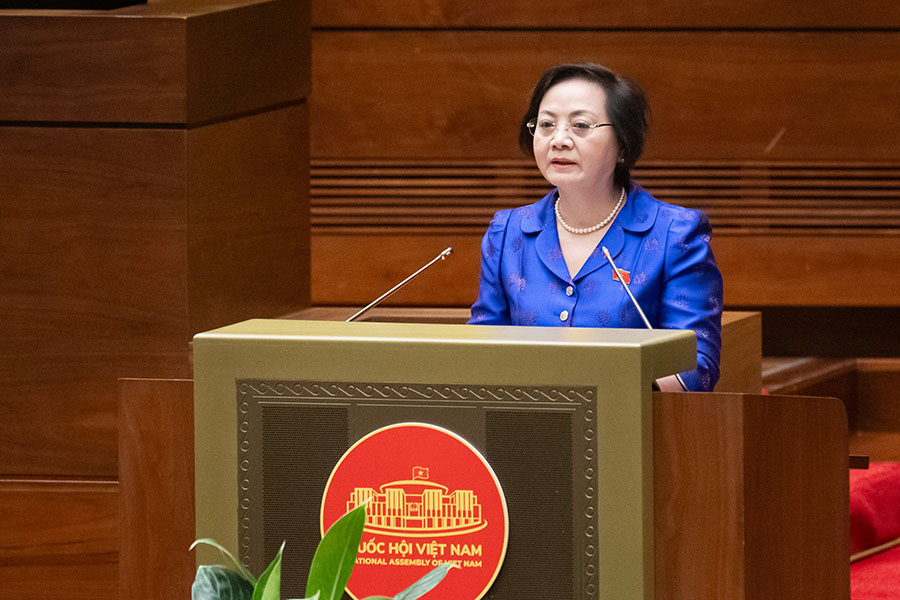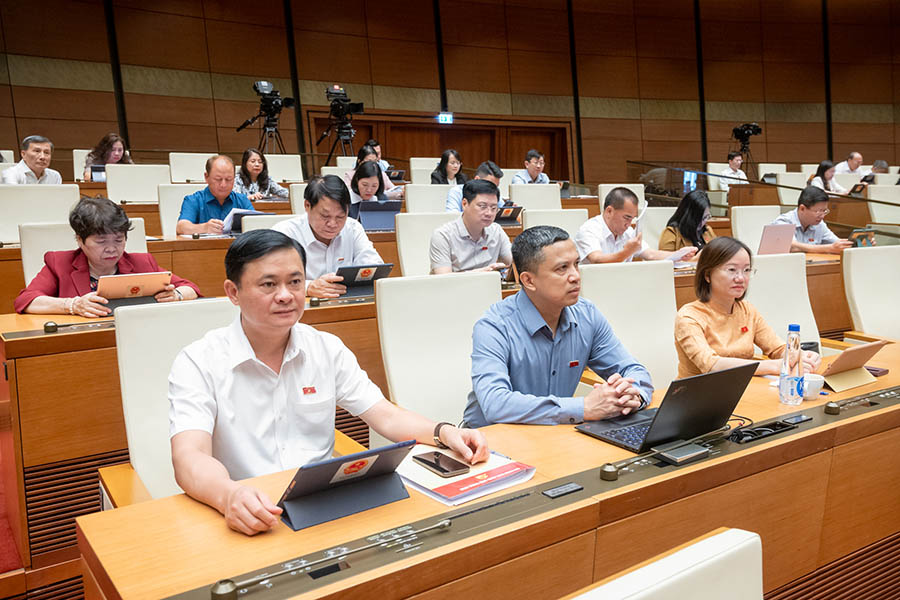Continuing the second phase of the program of the 9th Session of the 15th National Assembly, on the morning of June 11, Minister of Home Affairs Pham Thi Thanh Tra, authorized by the Prime Minister, presented a report on the arrangement of provincial-level administrative units in 2025.
According to the content of the submission, after the arrangement, the whole country has 34 provincial-level administrative units (ADUs) including 6 centrally-run cities and 28 provinces. Of which, 23 new provinces and cities were formed after the merger.

Minister of Home Affairs Pham Thi Thanh Tra said that, synthesizing from localities, after reviewing and agreeing on the data calculation method according to the opinion of the Law and Justice Committee (UBPLTP), the total number of cadres, civil servants, and public employees according to the assigned norms of provincial-level agencies, organizations, and units under the 52 provinces and cities implementing the arrangement is 447,657 people (including: 2,321 cadres, 79,118 civil servants, 366,218 public employees).
The total number of provincial-level public headquarters of 52 provinces and cities implementing the arrangement is 38,182 headquarters. After the arrangement, 33,956 headquarters will continue to be used. Surplus 4,226 headquarters.
According to Minister Pham Thi Thanh Tra, the arrangement and use of headquarters, handling of public finance and assets after the arrangement of provincial-level administrative units will be carried out in accordance with the regulations of the Government, the direction of the Prime Minister and the instructions of the Ministry of Finance.

Reporting on the review of the Government's submission and project on the arrangement of provinces and centrally run cities in 2025, Chairman of the People's Committee of the Ministry of Agriculture and Rural Development Hoang Thanh Tung said that the arrangement of provincial-level administrative units is a completely correct policy, demonstrating the wiseness and high political determination in carrying out the revolution of streamlining the organizational apparatus and arranging administrative units on an unprecedented scale.
The arrangement is based on the level of development, management capacity and requirements for expanding development space, combined with adjusting economic structure, allocating and combining resources to create a foundation for long-term stability and momentum for the country according to goals, strategic vision and long-term in the new era.
In addition, the People's Committee also basically agreed with the Government's proposals on the plan to reorganize the apparatus, arrange cadres, civil servants, and public employees and resolve public headquarters at administrative units implementing the arrangement.
According to Mr. Hoang Thanh Tung, the Government proposed that the draft Resolution take effect from July 1, 2025.
Regarding this content, the People's Committee proposes to determine that the Resolution takes effect from the date of its approval by the National Assembly to create a legal basis for localities to carry out the handover work.
"This is to prepare the necessary conditions, ensuring that local authorities in the administrative units formed after the arrangement can soon officially start operating according to the general plan of the Central Government. Maybe from July 1, 2025," said Mr. Hoang Thanh Tung.

With the historical nature of the 9th Session, the Government proposed that the National Assembly issue a Joint Resolution of the Session, in which it would recognize and highly appreciate the important role, contributions and historical achievements of district-level administrative units before ending operations.
In addition, the administrative units at the provincial and commune levels before the arrangement had a process of continuous striving for the common development of the country and each locality.










